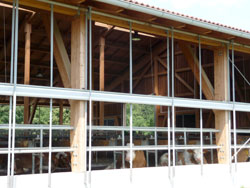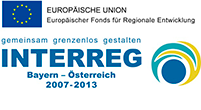INTERREG IV Bavaria-Austria-Project „Construction in Regional Cycles“, Project Part „Farm Construction with Wood or Steel – A Comparison of Primary Energy Demand and Global Warming Potential“

|
The construction sector represents a huge potential for climate and resource protection measures. For farm buildings the type of building material is a crucial factor for the amount of environmental impacts. This study’s objective is to determine the potential of wood as a construction material to save energy and CO2 in comparison to alternative materials. On the basis of a pilot project, functional equivalent dairy barns in steel and in wood construction are compared, with respect to the primary energy demand and the global warming potential, using life cycle assessment methodology. The substitution of the steel products for wooden products causes a reduction of the primary energy demand by 36 % and of the global warming potential by 62 %. The reasons are decisively due to the high energy demanding production of steel and associated with this, the use of fossil fuels. The benefits of using wooden products result equally from the natural production of wood, which withdraws CO2 of the atmosphere and stored carbon in wood, as well as from the thermal use of the stored solar energy at the end of the building’s life cycle. The wooden constructed barn examined in this study accumulates 47 tons of carbon, which is equivalent to 174 tons of CO2. Thus, the building material wood contributes with its beneficial environmental profile to the support of a sustainable agricultural land use. In order to give architects and farmers the opportunity to optimize the prospective environmental impacts by the choice of building materials, a software tool was developed, which allows a simplified and user-friendly estimation of the primary energy demand and the global warming potential of farm buildings. |
| Duration | December 2010 - December 2012 |
| People | Lubenau, Christel; Helm, Sabine; Weber-Blaschke, Gabriele Richter, Klaus |
| Funding | EU (INTERREG), BayStMELF (Ko-Finanzierung Bayern) |
 
|
|
| Downloads | Leaflet „Farm Construction in Regional Cycles“ (in german): |
| Part 1: Farm Buildings with Wood Construction | |
| Part 2: Primary Energy Consumption and Global Warming Potential of Farm Buildings | |
| Part 3: Regional Value Added |